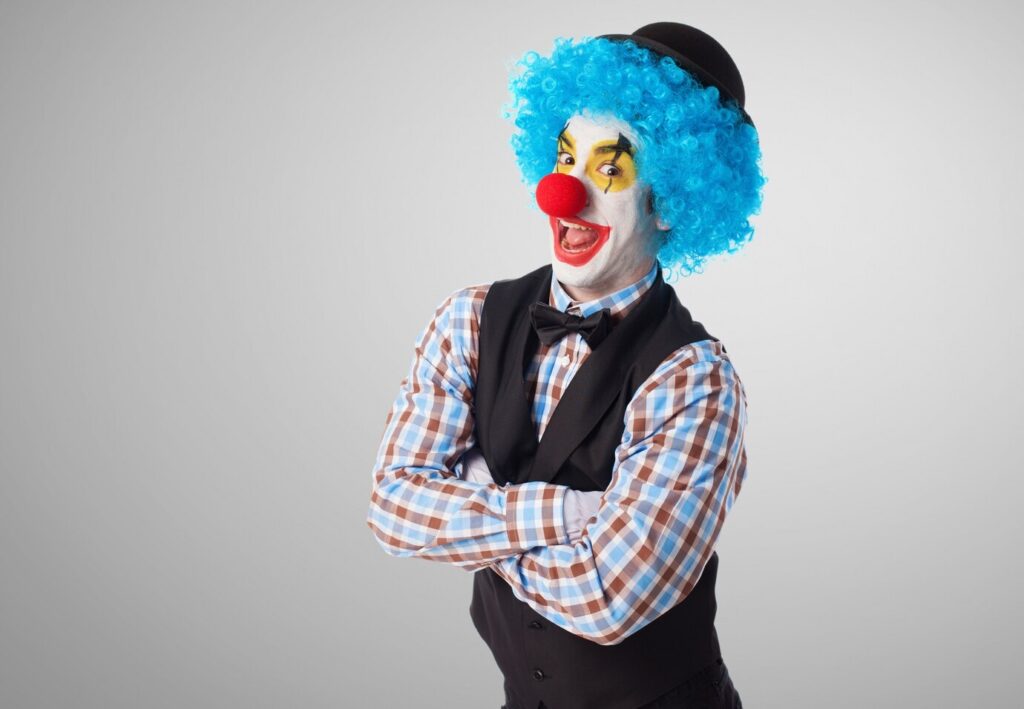
art the clown
Introduction: The Emergence of a Nightmare
In the expansive realm of horror villains, few have managed to captivate and terrify audiences in recent years quite like Art the Clown. Unlike the stereotypical horror antagonists, Art’s chilling presence is matched only by his uncanny ability to embed himself into our worst nightmares. Created by filmmaker Damien Leone, Art the Clown made his first unsettling appearances in short films and gained widespread notoriety with the release of Terrifies (2016) and its sequel Terrifier 2 (2022).
As a villain without a spoken word, Art relies on a combination of silent charisma, grotesque violence, and unnerving mannerisms to leave an indelible fear mark on viewers. But where did this enigmatic clown come from? What drives his murderous rampages? And why has he become such a staple in horror culture? Let’s dive deeper into what makes Art the Clown tick—if “tick” is even the right word for such an unpredictable and sadistic character.
The Creation of Art the Clown

The Brain Behind the Madness: Damien Leone
The genius—or madness—of Art the Clown starts with Damien Leone. Growing up a fan of the horror genre, Leone breathed life into Art through various passion projects. Art first appeared in two short films: The 9th Circle (2008) and Terrifier (2011). These early projects gave Art the opportunity to evolve, leading to his breakout performances in the All Hallows’ Eve anthology (2013) before landing the spotlight in his very own feature film.
Leone’s decision to make Art a silent killer was deliberate and deeply rooted in horror tradition. Think Michael Myers from Halloween or Jason Voorhees from Friday the 13th. Art’s twisted, mime-like approach offered a horrifying yet fresh spin. His silence amplifies the dread, making him unpredictable and haunting.
Leone also drew inspiration from a mix of sources, ranging from classic slasher films to the physical comedy of silent film stars like Charlie Chaplin. Ironically, Art’s origins as a character teeter on clownish and cartoonish humor before morphing into something far more sinister. What Leone truly wanted, however, was a villain who could terrify viewers without uttering a single word, which is precisely what Art achieves. art the clown
The Evolution of the Character Design
Art’s appearance is as important to his menacing persona as his actions. With white greasepaint covering his face, blackened lips, sinister dark eyes, and a blood-red nose, Art’s aesthetic strikes an unsettling balance between traditional clown archetypes and distorted malevolence. His black-and-white costume, adorned with a small hat perched precariously atop his head, gives him an otherworldly feel—more nightmare fuel than mere human.
Unlike whimsical clowns designed to amuse, Art’s appearance hints at something more macabre. The minimalistic color palette strips away any cheerful connotations, forcing the viewer to focus solely on his sinister actions. His exaggerated grins or disdainful smirks only serve to heighten the unsettling experience.
Art the Clown’s Legacy in Terrifier and Terrifier 2
Terrifier: A Cult Phenomenon
When Terrifier released in 2016, it shook horror fans worldwide. The film featured Art as the primary antagonist stalking and gruesomely murdering his victims. What separated Art from typical slasher villains was his downright absurd brutality. Gore wasn’t treated merely as a horror element but as an art form. art the clown
The film leaned heavily into practical effects, upping the discomfort factor. For instance, the “hacksaw scene” is frequently cited as one of the goriest and boldest moves in indie filmmaking. It showcased Art’s creative cruelty, a hallmark trait that distinguished him as not just a killer but an artist of pain.
Despite polarizing reviews, Terrifier gained a cult following. Art’s harrowing gnash of violence combined with his demented antics left audiences wanting more. Horror fans championed the film, turning it into a sleeper hit. art the clown
Terrifier 2: Elevating the Fright Factor
The sequel, Terrifier 2 (2022), took Art’s story and chaos to unfathomable levels. The plot introduces Sienna Shaw, a young woman primed to become Art’s ultimate nemesis, creating a David-and-Goliath dynamic. But if the original Terrifier pushed boundaries, its sequel obliterated them.
With a significantly higher budget than its predecessor, Terrifier 2 improved everything from kill sequences to cinematography. The film delivered a more polished look while maintaining the raw, unhinged energy that made Art infamous. Notably, it thrived at the box office, proving that audiences were ready to embrace an independent villain as part of the modern horror zeitgeist.
Anatomy of Horror: What Makes Art So Terrifying?
The Silent Factor
Art the Clown evokes horror without uttering a word. His silence shatters expectations, forcing your attention to his facial expressions, body language, and the horrendous, creative executions of his victims. His motives remain shrouded in mystery, adding a layer of psychological complexity: Is Art a maniacal human, or is he something more supernatural?
Psychological Manipulation
Art toys with his victims, reveling in their fear as much as their gruesome demise. It’s never just about the kill itself; it’s also about the build-up—the dread, the hopelessness, the terror. Watching Art, you can never predict where his focus will turn next, keeping the tension unbearable. art the clown
Iconic and Unforgettable Aesthetic
From his exaggerated facial expressions to his eerie costume, Art’s distinctive appearance elevates him as an unforgettable horror antagonist. The minimalist design allows room for your imagination to spiral, amplifying his dread factor.
The Fans’ Response: Love for a Monster
Art has garnered adoration from a specific subset of horror lovers. Conventions, artwork, tattoos, and cosplay have cemented his place in pop culture. Many credit Art for reviving interest in indie horror films.
While not everyone can stomach his gore-drenched escapades, fans argue that Art represents a bold new era in horror storytelling. A generation raised on disposable jumpscares finally has a monstrous villain worthy of nightmares, cementing Art’s unique footprint within the horror canon.
Conclusion: Why Art Matters in Horror
Art the Clown has risen from obscurity to become one of horror’s most terrifying icons in the modern age. His ability to terrify while simultaneously capturing the grim humor of a killer clown is groundbreaking in a genre often riddled with clichés.
Whether you watch Terrifier for the gore or Art’s morbid charisma, one thing is irrevocably clear: this silent menace is here to stay. With every painted grin and bloodsoaked kill, Art secures his legacy as a nightmare that horror fans simply can’t—and won’t—forget.






